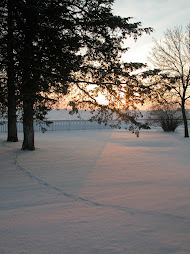
Yes, the old building (inset) has been transformed, at least from the outside.
To the one-time pig house then horse stable, we added windows for light and ventilation, and shutters and cupolas, which serve no practical purpose whatsoever. But, heh, they add character!
The latter is what threw some of the locals, who were certain we’d transformed our animal shelter into a Belushi-esque Animal House, where our two college-bound sons live -- with their togas no doubt! (That was the rumor, anyway, as revealed to us by the local beautician one Friday night at the American Legion.)
Well, not quite on the building, folks. Sure, it's insulated, has electricity, water, and to my mens' delight, a refrigerator. Still, it's not heated and it definately is not housing my teens.
To the one-time pig house then horse stable, we added windows for light and ventilation, and shutters and cupolas, which serve no practical purpose whatsoever. But, heh, they add character!
The latter is what threw some of the locals, who were certain we’d transformed our animal shelter into a Belushi-esque Animal House, where our two college-bound sons live -- with their togas no doubt! (That was the rumor, anyway, as revealed to us by the local beautician one Friday night at the American Legion.)
Well, not quite on the building, folks. Sure, it's insulated, has electricity, water, and to my mens' delight, a refrigerator. Still, it's not heated and it definately is not housing my teens.
It’s still a shelter for something related to horses -- horsepower!





